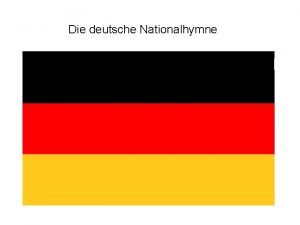DAAD Deutscher Akademischer Austausch Dienst German Academic Exchange

- Slides: 1

DAAD Deutscher Akademischer Austausch Dienst German Academic Exchange Service Group 43 Development Co-operation, Section 434 Co-operation & Projects in Higher Education IMPLEMENTATION OF INTEGRATED WATER AND LAND RESOURCES MANAGEMENT PRACTICES IN FERGANA VALLEY 1 Team BAHADIR BOZ 1, NODIR MIRZAEV Leader, Fergana Valley Water Resources Management Project, Navoi Street 44, Room 512, Tashkent, Uzbekistan, bboz@temelsu. com. tr, +998 90 188 29 19 2 Land Water Resource Manager, Fergana Valley Water Resources Management Project, Navoi Street 44, Room 512, Tashkent, Uzbekistan, nodir. mirzaev@yahoo. com, +99890 9795358 This poster demonstrates implementation and impact of integrated water and land resource management approaches in the three (Altiarik, Bagdad and Rishtan) districts of Fergana region of Uzbekistan comprising an area of approximately sixty seven thousand hectares (Figure-1), of which about forty eight thousand ha is irrigated. Fergana Valley is densely populated and intensively cultivated region in Uzbekistan. Agriculture plays key role for income and livelihood of majority of population. A major problem is the high ground water table which is result of inadequate water and resource management, and poor farm management practices. This leads to soil and water salinization, risk of biodiversity loss, reduction of crop diversity and loss of gardens, reduced crops yields, and lower income. Preparation of organic fertilizers for yield of cotton crop Installation of piezometer in DP Groundwater recording Installation of pressure relief wells Wheat Demonstration Plots As a result of monoculture which continued for many years, layers with hard pans have occured. The ultimate aim is to increase the yield levels by improvement of physical, chemical and biological conditions of these layers through spreading of manure and deep ripping. Characteristics of Demonstration Plots WCA Farm Soil type Salinity GW level Wheat sort Altiarik Pavulgan Abduselam Affect of organic manure, DP and green manure on the unit weight of soil Sharofatkhan Bagdad Irrigator Bagdad Nurmuhammed Bagi Rishtan Zahidan Chasmasi Mamadjan Fertile Medium 0. 70 -1. 00 m 1. 50 -2. 00 m 0. 70 -1. 00 m Zamin-1 Krasnodar-99 Kroshka Layer (cm) Control 0 -10 DP Control 10 -20 DP Affect of organic manure and DP on development and yield of wheat Soil unit weight during vegetation season (g/cm 3) Uzbekistan is implementing several projects for solution of the above mentioned problems. One of them the Fergana Valley Water Resources Management Project (FWRMP), Phase-I, 2010 -2015, developed in 2010 by Resolution of the President in order to provide sustainable agricultural development on irrigated lands, water and land resources use efficiency increase in Fergana Valley, as well as extension of collaboration with the World Bank. The main objectives of the FWRMP are to: Promote sustainable irrigated agriculture production, increase employment and generate farm incomes by improving drainage and irrigation systems and overall water and land resources management; Reduce damage to private and public infrastructure, and improve environmental and public health conditions by controlling water logging. The project introduces best practices to achieve the objectives of the FWRMP: improvement of irrigation and drainage systems by ways of rehabilitation of drainage systems and thus reduction of water logging and soil salinization; Provision of community and agricultural development support by training on improvement of irrigation practices, land leveling, deep ripping, and establishment of nine demonstration plots. Demonstration Plots in the Fergana Valley Three demonstration plots for each project district (nine in total) have been proposed. In these DPs practices that will improve crop yields, such as better water management and field distribution of water, improved soil fertility and increased organic soil matter, are being demonstrated. The six cotton and wheat demonstration plots are essentially the same; six are included to ensure coverage of the whole project area, and the two DPs in each district are at different stages in the cotton-wheat-secondary crop 2 years rotation cycle so at any one time each plot demonstrates a different stage. The FWRMP demonstration programme concentrates on those practices which can reverse the negative influence on crop yield through better water management and in-field distribution of water and improved soil fertility and increased organic soil content. The programme demonstrates deep ripping and levelling / grading of fields, minimum tillage techniques, the introduction of vegetable and forage / green manure crops, irrigation of fields using constructed field head ditches, siphons, field drains, and furrow irrigation control. Properties of soil : The average degree of salinity - content of humus and nutrients - mechanical and water physical properties of soil Organic fertilizer : 30 t/ha applied for winter wheat in the f/e Land preparation and soil tillage : Tecnically perfect surface provides economical consumption of irrigation water, uniform watering of the field and preventing the emergence of salt stains Deep ripping of the soil up to 60 -80 cm to be performed periodically for the destruction of sole shoe and improvement of the water-physical properties Soil moisture during vegetation season (%) Collection Number of total stems (m 2) Crop height (cm) Number of wheat in one spike Weight of 1000 wheat grains (gr) Total yield (kg/ha) Altiarik Bagdad Rishtan 0 -30 1. 38 1. 36 1. 37 30 -50 1. 42 1. 39 1. 40 0 -30 1. 34 1. 29 1. 31 30 -50 0 -30 1. 37 1. 34 1. 35 14. 8 14. 9 15. 1 30 -50 16. 1 16. 8 16. 5 0 -30 16. 5 16. 7 16. 5 30 -50 17. 9 18. 4 18. 7 Control 3 2 3 DP 4 4 6 Control 321 353 361 DP 373 430 427 Control 71. 0 74. 0 73. 0 DP 79. 8 77. 6 80. 0 Control 29. 3 31. 6 32. 5 DP 33. 2 34. 4 Control 30. 0 32. 0 35. 0 Control DP DP 36. 0 35. 0 40. 0 Control 2660 3950 4500 DP 5100 5600 8120 2440 1650 3620 Yield increase compared to control plot (kg/ha) Option Control 20 -30 DP Control 30 -40 DP Control 40 -50 DP Control 50 -60 DP Control 60 -70 DP Control 0 -70 DP Date 15. 05. 2012 21. 09. 2012 15. 05. 2012 21. 09. 2012 Altiarik 1. 35 1. 37 1. 30 1. 32 1. 38 1. 32 1. 34 1. 37 1. 40 1. 34 1. 36 1. 40 1. 42 1. 35 1. 37 1. 31 1. 43 1. 36 1. 38 1. 42 1. 46 1. 36 1. 40 1. 43 1. 46 1. 35 1. 42 1. 39 1. 41 1. 34 1. 39 Bagdad 1. 31 1. 34 1. 29 1. 33 1. 36 1. 30 1. 34 1. 37 1. 39 1. 33 1. 36 1. 39 1. 41 1. 33 1. 36 1. 40 1. 42 1. 34 1. 37 1. 40 1. 44 1. 35 1. 40 1. 41 1. 45 1. 36 1. 42 1. 37 1. 40 1. 33 1. 36 Rishtan 1. 32 1. 33 1. 28 1. 30 1. 37 1. 30 1. 33 1. 36 1. 39 1. 32 1. 34 1. 40 1. 41 1. 34 1. 40 1. 42 1. 33 1. 35 1. 41 1. 44 1. 36 1. 42 1. 44 1. 36 1. 38 1. 40 1. 31 1. 33 We can reach to the conclusion that increase in the yield levels in the demonstration plots compared to the control plots can be corrolated to deep ripping and application of organic manure. In the demonstration plots there has been a saving of 1320 -1465 m 3/ha in the irrigation water used and number of irrigation has also reduced 1 -1. 5 times in the average compared to the control plot. Cotton Demonstration Plots Previous researchs show that decrease of the organic material in the soil content as a result of monoculture applied in a field for long years changes physical, chemical and biological characteristics of the soil and eventually causes loss of soil fertility. Similarly lack of cleaning works of onfarm drains and main collectors on time, and consequent increase of the ground water levels and mineralization result in accumulation of harmful salts in the culture zone leading losses in the soil fertility. Affect of organic manure, DR and green manure on the moisture of soil 27. 08. 2012 Number of crop in one hectare (unit) Control DP Control Height of crop (cm) DP Control Number of flowers (unit) DP Control Number of blossom (unit) DP Control Number of ball (unit) DP Control Number of opened ball (unit) DP Control Yield (kg/ha) DP Yield increase compared to control plot (kg/ha) Altiarik 117. 5 120. 6 64. 0 71. 8 1. 5 2. 5 4. 0 6. 0 5. 2 7. 1 0. 8 1. 2 2520 2950 -430 Bagdad 97. 0 103. 2 108. 0 123. 4 1. 0 2. 0 4. 0 6. 0 8. 1 10. 4 4. 0 5. 8 3000 3290 Rishtan 75. 6 81. 2 79. 0 91. 4 1. 0 2. 0 3. 0 5. 0 9. 1 15. 4 4. 2 8. 4 2690 4030 1340 Farmer Field Schools The development of farmer field schools (FFSs) is divided into three components: Phase 1–Development of training plan. Phase 2–Training of instructors (trainers). Phase 3–Training of farmers. Training of farmers in groups has an interactive character. Farmers talk to one another and their trainer engage in debate and share their opinions and experiences from their work on farms. The main training method is to demonstrate by example. Organized Demonstration Plots (DP) serve as visual examples of best practices, methods and technologies. Field visits for groups of three to five farmers are effective for training. These training sessions take place in farmers’ fields. Conclusions The project is elaborated within the framework of the Ferghana Valley Water Resources Management Project (Phase-I). Deep ripping, laser land leveling, application of appropriate amount of fertilizer, timely and correct application of agricultural practices and irrigation have resulted in wheat yields in pilot option was 8120 kg/ha, whereas it was 4800 kg/ha in the control plot. Demonstration Plots (DP) accompanied by Farmer Field Schools (FFS) have been successfully used in FWRMP in agricultural development to carry out research and as a practical training tool. They have been used not only to introduce new techniques to farmers but also remind the forgotten ones. At this stage, almost two thirds of the planned activities have been implemented with all of them giving expected outcomes. Besides generic advantages, results obtained within the FWRMP show that the project concepts on integrated water and land resources management have proven to be a sustainable solution which can be upscaled to the Fergana Valley.

